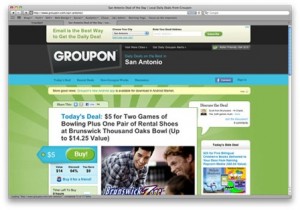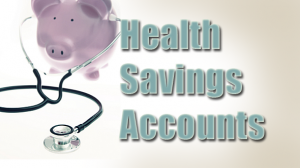December 15th, 2010 by Amy Bolger
 Despite the availability and relative ease of using a professional tax preparer, an estimated 40% of Americans do their own taxes. The typical do-it-yourself filer needs about 24 hours to complete the task, according to the IRS. Despite the availability and relative ease of using a professional tax preparer, an estimated 40% of Americans do their own taxes. The typical do-it-yourself filer needs about 24 hours to complete the task, according to the IRS.
At home software is always a helpful tool to use, but no brand is GUARANTEED to be infallible. Thus, it’s important for do-it-yourself filers to keep up as best they can with relevant changes to the tax code as a safeguard against errors in their tax prep software. Here are the 4 most important changes you should know if you are the “do-it-yourselfer”:
1. Smaller Deductions for Business and Medical Mileage
You can’t write off the cost of a daily commute by car, but you can deduct other work-related mileage you’re not reimbursed for (which you have long since been able to do). This year, for example, you’d get 50 cents a mile for driving from, say, DC to New York City and back for a trade show. That’s five cents less per mile than you’d have gotten for the same trip in 2009. The deduction for operating your car for medical reasons is 7.5 cents less than last year as well (16.5 cents per mile in 2010). However, driving for charitable purposes is still deductible at 14 cents per mile, just like last year.
2. Better Limits on Deductions for Property Damage or Loss Due to Theft
For damaged or stolen property to be deductible, the loss amount must now only exceed $100, compared with $500 in 2009. The “10% of AGI” rule still generally applies though. (Remember, AGI <Adjusted Gross Income> is the sum of all your income – such as wages, interest and alimony received – minus certain adjustments, such as IRA contributions, student loan interest you’ve paid and moving expenses.)
3. Deduction for Taxes and Fees on New Motor Vehicle Purchases
Did you buy a new car, light truck, motor home or motorcycle between February 17 and December 31 of 2009? If so, in 2010 you can deduct state, local, and excise taxes related to the purchase. If your state has no sales tax, you can instead deduct other taxes or fees the purchase generated. An interesting feature of this deduction is you can use it to increase your standard deduction or take it as a regular itemized deduction, whichever works out best for you. (See your tax professional for more clarification).
There are a couple limitations to know about. First, the deduction is only good on up to $49,500 of the purchase price. Second, it’s phased out at certain levels of modified adjusted gross income (MAGI) – between $250,000 and $260,000 for joint filers and from $125,000 to $135,000 for other taxpayers. (MAGI is your AGI plus certain deductions such as those for student loans, IRA contributions and higher education costs.)
4. Bigger Deductions for Long-Term Care (LTC) Insurance Premiums
IRS rules allow long term care insurance policy owners to deduct more of their premiums in 2010 than in 2009. For example, those ages 51 to 60 can claim up to $1,230 in LTC insurance premiums this year, compared with $1,190 last year. Similar increases have been approved for other age groups as well: 40 and under, 41-50, 61-70 and 71 or over. At $330, the deduction is smallest for the 40-and-under age group. It rises progressively to a maximum of $4,110 for those ages 71 or over.
To see what other potentially beneficial changes have been made, check out a list called “Tax Changes for Individuals” at the IRS website.

November 17th, 2010 by Amy Bolger
Who amongst you has not received your refund check?? Many of you could receive that check from the IRS — just before the holidays. Wednesday, the IRS is expected to release the annual list of people whose refund checks were returned by the Postal Service as undeliverable. Last year, the IRS had over $123 million in returned checks. The list won’t be coming out until later today though. Make sure to check if you are still waiting.

To access the IRS Website, where you can find your missing check, click HERE.

November 17th, 2010 by Amy Bolger
 There seems to be more and more scams every year around the Holiday season. This year, however, fraudsters are attempting to lure teens and tweens onto websites by promising them free stuff in exchange for playing games, watching videos, and filling out surveys. While these websites do exist all year round, kids tend to be more attracted to them around the holidays. One of the predominant reasons is that kids are busy surfing the web, looking up toys, and making lists of what they want Mom and Dad to buy them. And while your kids are probably searching legitimate sites, at the same time, the illegitimate ones pop up too. There seems to be more and more scams every year around the Holiday season. This year, however, fraudsters are attempting to lure teens and tweens onto websites by promising them free stuff in exchange for playing games, watching videos, and filling out surveys. While these websites do exist all year round, kids tend to be more attracted to them around the holidays. One of the predominant reasons is that kids are busy surfing the web, looking up toys, and making lists of what they want Mom and Dad to buy them. And while your kids are probably searching legitimate sites, at the same time, the illegitimate ones pop up too.
A second reason is because you may have already laid out a list of items you are not planning to buy your kids this holiday season. So if you’re not going to give him an Xbox 360 and he doesn’t have the money to buy it on his own, then these websites that promise him a free game system are almost too tempting to pass up. What kid wouldn’t want a free gaming system?
So what happens if your teenager does start giving out his name, email address and other personal information? His data is then sold to marketers and in a worst case scenario it could be used for identity theft. Parents also need to worry about “cookies” and malware when kids go onto these sites.
As for those prizes, chances are your kid is never going to actually get his hands on a new iPad or Xbox. These sites require users to fill out endless surveys and watch too many videos, which force most people to give up after a couple of weeks. And even if your youngster sees the process through, the scam artists make it so difficult to redeem the prizes that nearly no one ever wins. In the rare case your kid does actually score an Xbox, chances are he will be told that the gaming system is currently out-of-stock.
What’s a parent to do? Buying your kid whatever he wants clearly isn’t the answer. Sure, it would stop the temptation to chase free stuff, but it would create so many other issues. Instead, warn your child to avoid these sites and to NEVER give out his personal information. Then, if he really feels he must have the latest gaming system, let him earn it the old fashioned way by saving up his allowance or by getting a job, if he’s old enough to work. Finally, parents who aren’t sure if a website is legit or not can look it up on SiteJabber.com.

November 11th, 2010 by Amy Bolger
 Despite the fact that we would all like to think that such a thing as free money exists, alas, it does not … unless, of course, you want to open a checking account. Several banks have started offering cash just to get new customers in the door. But hidden in the fine print, are fees and rules that will wipe out the supposed windfall. Cash incentive offers have more than doubled over the last year. Despite the fact that we would all like to think that such a thing as free money exists, alas, it does not … unless, of course, you want to open a checking account. Several banks have started offering cash just to get new customers in the door. But hidden in the fine print, are fees and rules that will wipe out the supposed windfall. Cash incentive offers have more than doubled over the last year.
For the banks, this is a calculated trade-off. As they start lending again, banks need more cash from deposit accounts to help fund those car loans and mortgages. So while a handout from a bank might feel like you’ve won the lottery, you’re actually handing over the real prize: your money. Banks are targeting “good” would-be customers, who are likely to maintain high balances and use their debit cards frequently. In turn, they hope new account-holders will raise banks revenues and apply for loans down the road.
But, if you are a savvy consumer, you already knew there’s no such thing as free money. Expect to jump through serious hoops, just to qualify. For starters, you don’t get the cash right away. You first have to meet certain requirements, many aimed at simply getting more of your money: To get $300 at Citi, you’d have to open a Citigold interest checking account and deposit $1,000 by Nov. 18. Then, you’ll have to maintain an average daily balance of $1,000 through the end of the month. You’ll also have to sign up for three more Citi products – like a savings account, certificate of deposit or a credit card within two months of opening the account. And when you finally get the money, expect a bill come tax time. All of these cash bonuses will be taxed as regular income. If you’re in the 25% tax bracket, that $300 award will drop to $225.
So here’s the rub –
Minimum Required Balance
Consumers who receive cash offers for a new account should watch out for minimum balance requirements, which more checking accounts require these days. The average minimum balance requirement is $3,883 for a no-fee interest-bearing checking account, up 15% from last year, according to Bankrate.com. That minimum falls to $249 on non-interest checking – still 34% higher than last year. The average customer who falls below the threshold pays a fee as high as $13. Look for accounts with zero minimum balance requirements.
Debit Card Rules
At Chase, consumers need just $25 to open Chase Checking and to get up to $125 cash bonus. But account-holders will be charged $6 per month if they don’t buy something with their debit card five times each month or have at least one monthly direct deposit posted to their account. For banks, this proves especially lucrative because they make money with interchange fees.
Overdraft Fees
Along with cash bonuses, new checking accounts come with a hard sell on overdraft coverage. AVOID IT. The fees kick in when a consumer withdraws more money from their checking account than they have. As of August, new Federal Reserve rules prevent banks from automatically enrolling consumers in debit-card overdraft coverage, which permits purchases to go through even if the consumer doesn’t have enough money in their checking account, thereby allowing banks to collect their fee. Now, customers who do nothing will have their overdraft purchases declined.

October 12th, 2010 by Amy Bolger
 We may be inclined to classify a purchase as an impulse buy the second it is proven to be frivolous, but what exactly should be considered one? “By definition, impulse buying is any purchase made without any preconceived plans,” Michael McCall, professor and chair of Ithaca College’s Department of Marketing and Law, explains. This means that an impulse buy can include buying a pack of gum while in line at grocery store or purchasing a Rolls Royce while out window shopping. We may be inclined to classify a purchase as an impulse buy the second it is proven to be frivolous, but what exactly should be considered one? “By definition, impulse buying is any purchase made without any preconceived plans,” Michael McCall, professor and chair of Ithaca College’s Department of Marketing and Law, explains. This means that an impulse buy can include buying a pack of gum while in line at grocery store or purchasing a Rolls Royce while out window shopping.
To capitalize on consumers’ general unpredictability, stores are always looking for ways to get you to make additional or more expensive purchases. Interestingly enough though, the tactics differ dramatically depending on the price of the item. Retailers typically get consumers to pick up small items by overloading their check-out areas and carefully organizing in-store displays.
Big ticket items, conversely, are impulsively purchased when a customer considers them scarce. This means, for example, that you’re more likely to pick up a cashmere sweater when it’s the last one on the rack, especially if another customer is eyeing it. Similarly, the retailer can achieve the same result by offering a provisional discount, the idea being that you can only get that car at that price at that very moment.
While the idea that you can be manipulated into buying may seem rather daunting, recent research indicates that we may not be as controlled by our impulses as we think. A 2009 study led by Wharton marketing professor David Bell argues that only 20% of purchases can actually be considered unplanned. He explains that you can’t classify a choice between two brands as unplanned if you intended to buy that particular category of item to begin with. For example, choosing Coke or Pepsi can’t be considered an impulse buy if you know you are going to buy soda.
The same logic can be similarly applied to most big ticket purchases. Additionally, purchases that may indeed be considered unplanned aren’t necessarily problematic.
Go to the store with a plan: Your inclination to impulse shop is determined primarily by how much time you spend in the store and where you travel while in it. As such, the most frugal shoppers are those who enter a shop with a plan and subsequently stick to it. For example, taking the extra time to write out a list before going to the grocery store may actually minimize the items that make it into your cart.
Stick to a budget: Minimize big ticket impulse purchases or, more pointedly, to avoid jumping at a retailer’s “one time only” deal, don’t allow yourself to purchase anything that will put you over your monthly budget. Retailers have become increasingly aggressive these days in an attempt to coerce even careful shoppers.
Visit stores during off-peak hours: To minimize getting stuck and/or redirected, you should try to visit stores during off-peak business hours. This can be as simple as visiting a supermarket in the early afternoon or as extreme as avoiding all retail stores on Black Friday.
AVOID online shopping: Online shopping is especially dangerous for impulse buyers. Online retailers are increasingly good at playing the scarcity card, as Amazon’s listing for Apple’s popular iPad. The page pointedly lets consumers know that they should “order soon” as there are only four of the devices left in stock.
Cash is King: Online purchases are also susceptible to impulses in that they require a credit card or other electronic mode of payment. Consumers tend to become more frivolous when they break out the plastic.

October 4th, 2010 by Amy Bolger
 You might think that the beginning of October is a bit early to start worrying about taking care of year-end business. But with these three must-dos, getting an early start doesn’t just let you cross a chore off your list, it can actually put some extra money in your pocket. You might think that the beginning of October is a bit early to start worrying about taking care of year-end business. But with these three must-dos, getting an early start doesn’t just let you cross a chore off your list, it can actually put some extra money in your pocket.
1. Make the most of your retirement accounts.
Retirement savers have a lot to keep in mind at year-end. Although you don’t have to make current-year contributions to IRAs until next April 15, there’s a laundry list of other tasks you have to take care of before December ends:
- Contributions to 401(k)s and other employer-sponsored retirement plans are due by Dec. 31.
- If you’re required to take mandatory distributions from your retirement accounts, either because you’re age 70 1/2 or older or because you have an inherited IRA, then you must do so by the end of the year.
- The opportunity to convert your traditional IRA to a Roth and take advantage of special 2010 rules that allow you to put off the tax impact until 2011 and 2012 goes away on Jan. 1.
These things are easy to forget about in the year-end rush. There are big penalties for not taking required minimum distributions, but even more costly is the opportunity cost of not getting as much money as you can into your retirement accounts.
2. Taking tax losses.
If you’ve lost money on a stock, you can get a tax break by taking a capital loss on your tax return. To do so, though, you must sell the stock by Dec. 31. The reason you might want to do so early, though, is to get a jump on everyone else doing the same thing. Another advantage is that if you want to take losses but still own the stock in the future, you have to wait 30 days after selling to buy it back. If you sell now, you can buy back in November or December, just as latecomers are selling, hopefully pushing the price down to let you get in more cheaply.
3. Re-balance your portfolio.
If you haven’t done re-balancing in a while, you shouldn’t put it off any longer. Whether it’s getting your stock/bond mix back to normal or adjusting your sector exposure, re-balancing makes sure you’re taking the right amount of risk.
For instance, say you have allocations to both financial stocks and real-estate investment trusts. If you haven’t rebalanced, the value of your REITs is much higher than your financials, leaving you overly exposed if REITs reverse course and fall. By re-balancing, you lock in some profits on your REITs while taking advantage of low prices to boost your financial exposure. It’s not guaranteed to make you money, but over time, rebalancing has helped many people take advantage of the natural cycles within markets.
SO……. Do it today
Sure, you could wait on some of these things. But why wait? There is no time like the present. By acting sooner than later, you can get a jump on your peers; and being first out of the gate may well mean more money in your pocket.

October 3rd, 2010 by Amy Bolger
 Groupon’s popularity has skyrocketed since it launched in 2008. The company reports that it now has 18 million subscribers in 29 countries. Total savings in North America alone add up to half a billion dollars. Part of the appeal is how easy it is to use: Customers can sign up to receive daily deals free of charge. Then, once a deal is posted at midnight, they can purchase the coupon, which often provides a 50 percent or greater discount off the face value of the good or service being offered that day. There’s often a minimum number of customers required for the deal to go through, so people share the deal with their friends on social networking sites. Groupon’s popularity has skyrocketed since it launched in 2008. The company reports that it now has 18 million subscribers in 29 countries. Total savings in North America alone add up to half a billion dollars. Part of the appeal is how easy it is to use: Customers can sign up to receive daily deals free of charge. Then, once a deal is posted at midnight, they can purchase the coupon, which often provides a 50 percent or greater discount off the face value of the good or service being offered that day. There’s often a minimum number of customers required for the deal to go through, so people share the deal with their friends on social networking sites.
But #Groupon isn’t all about delivering super-cheap items to coupon-hungry customers. Here are some things you might not know about how the company works:
1. Groupons focus on experiences, not things. While plenty of deals include gift certificates to restaurants or coupons for yummy desserts, many of the most popular ones center on experiences. Some of Groupon’s most popular experiential deals include sky diving, sensory deprivation tanks, and winery tours. The company has also offered discounts on culinary tours, foreign language classes, and hotel stays.
2. You don’t need to use the coupon the day you buy it – in fact, you often can’t. There’s some urgency to the way Groupon works though. Deals get posted at midnight and customers usually have about 24 hours to nab it, although sometimes the limit is reached early. (During that window, you can use the discussion board on Groupon.com to ask questions and get input from others.) But once you buy the deal, there’s no rush to use it. In fact, you often can’t use it on the day that you buy it, partly to help merchants prepare for the onslaught of new customers.
For appointment-based deals, such as hair cuts or salon visits, it is recommended that you wait until the initial rush passes before cashing in. Most deals last six months to a year, and Groupon helps users remember to use what’s in their account through reminder e-mails.
3. You might not be getting the same deals as your girlfriend/boyfriend. Because Groupon customizes deals sent to customers based on their gender, zip code, and buying history, a woman might receive a deal on a pedicure while her husband gets offered a restaurant gift certificate.
4. It’s no longer the only game in town. LivingSocial.com, Tippr.com, and 8coupons.com are among the new entrants in the field of group coupons. At 8coupons.com, for example, users can check out the current deals closest to them on an interactive map (the site gets your location from your IP address). It collects more than 500,000 deals, including those offered through Groupon.
5. It might get you to spend more money, not less. You might not even be thinking about buying a cupcake or splurging on a massage until you see a tempting offer come in from Groupon. The power of suggestion can get you to spend more, not less. But for users who had already planned to spend the money, there’s only upside.
6. Users aren’t your typical coupon clippers; in fact, they make a lot of money. Most Groupon users are women (77 percent), work full time, and about half are single. About half earn over $70,000 a year and 29 percent earn more than $100,000, according to Groupon.
7. Groupon developed out of a charity site. Groupon grew out of ThePoint.com, a site for collective action and charity work. It allows people to start and promote campaigns, the same way Groupon promotes discounts.

September 30th, 2010 by Amy Bolger

The whole social networking phenomenon has millions of Americans sharing their photos, favorite songs and details about their class reunions on Facebook, MySpace, Twitter and dozens of similar sites. But there are a handful of personal details that you should never say if you don’t want criminals, cyber or otherwise, to rob you blind. At least by now, most people know that those drunken party pictures could cost them their jobs. But don’t think that you can’t enjoy networking and sharing photos, just know that sharing some information puts you at risk.
Your Birth Date and Place
Sure, you can say what day you were born, but if you provide the year and where you were born too, you’ve just given identity thieves a key to stealing your financial life. A study done by Carnegie Mellon showed that a date and place of birth could be used to predict most, and sometimes all of the numbers in your Social Security number.
Vacation Plans
There may be a better way to say “Rob me, please” than posting something along the lines of: “Count-down to Maui! Two days and Ritz Carlton, here we come!” on Twitter. But it’s pretty hard to think of one. Just post the photos on Facebook when you return, if you like.
Home Address
Do I have to elaborate? A study recently released by the Ponemon Institute found that users of Social Media sites were at greater risk of physical and identity theft because of the information they were sharing. Some 40% listed their home address on the sites; 65% didn’t even attempt to block out strangers with privacy settings. And 60% said they weren’t confident that their “friends” were really just people they know.
Confessionals
You may hate your job; lie on your taxes; or be a recreational user of illicit drugs, but this is no place to confess. Employers commonly peruse social networking sites to determine who to hire and, sometimes, who to fire. One study done last year estimated that 8% of companies fired someone for “misuse” of social media.
Password Clues
If you’ve got online accounts, you’ve probably answered a dozen different security questions, telling your bank or brokerage firm your mother’s maiden name; the church you were married in; or the name of your favorite song. Got that same stuff on the information page of your Facebook profile? You’re giving crooks an easy way to guess your passwords.
Risky Behaviors
You take your classic Camaro out for street racing, soar above the hills in a hang glider, or smoke like a chimney? Insurers are increasingly turning to the web to figure out whether their applicants and customers are putting their lives or property at risk. So far, there’s no efficient way to collect the data, so cancellations and rate hikes are rare. But the technology is fast evolving and insurance companies are responding. Don’t get yourself into trouble.

September 28th, 2010 by Amy Bolger
More companies are offering health savings accounts,in which you can stash cash to cover your medical bills. Here’s what you need to know before signing up.

1. Your employer is more likely to offer this option: When you get your open-enrollment packet you may see something new on the benefits menu. Companies are increasingly offering a health insurance package that includes a high-deductible policy plus a tax-advantaged health savings account (HSA) in which you can stash cash to cover your medical bills. The appeal for you is lower premiums, typically 10% to 40% less than those of a traditional plan. Employers, meanwhile, like this plan because it gives you an economic stake in your own wellness.
2. These plans look cheap: While you’ll save on premiums over a traditional plan, the deductible (at least $1,200 for individuals; $2,400 for families) is a lot higher. You’ll foot every dollar of your bills, excluding, usually, preventive care up to that amount.
Enter the HSA: To cover costs, you can put pretax money in one, up to $3,050 for individuals in 2011, $6,150 for families, plus $1,000 more if you’re 55 or older. Your employer may also contribute. Withdrawals for medical bills are tax-free. Unused dough rolls over year to year, growing without being taxed.
3. Some people may save money by choosing a high-deductible plan. Young and healthy people, for example, can fare better because they pay low premiums and don’t use much care. If you have a particularly costly medical condition, such as cancer, you too may benefit. Once you hit the plans’ out-of-pocket maximum, no more than $5,950 for individuals, $11,900 for families – you pay nothing. Comparatively, in traditional plans you’ll never stop owing co-pays.
4. Run the numbers for yourself. The deductible, and coverage after the deductible, in these plans varies widely. So you’ll want to do the math to see if enrolling will be worth your while. Your company may provide a calculator to show how you’d fare in this plan, versus other options, based on last year’s health costs. But if not, ask your insurer for a breakdown of your 2010 expenses, and add up how much you’d have paid under each plan. Pay close attention to prescription costs. In a high-deductible plan, drugs typically aren’t covered before the deductible.
5. An HSA can double as a retirement account: If you have cash to pay health bills out of pocket, you might use an HSA to supplement your nest egg. Even in retirement, you can tap the funds tax-free for medical needs. And starting at 65, you can withdraw penalty-free for any reason, though you’ll owe income taxes. You choose how the account is invested. If you’re saving it for retirement, go with low-cost mutual funds. (Don’t like your employer’s options? You can go elsewhere — access Vanguard funds via hsaadministrators.info) But if you’ll use the money for current health costs, a savings account is the right bet.

September 22nd, 2010 by Amy Bolger
 September 23 marks the six-month anniversary of health reform. It’s also the date when several key insurance changes come into effect. Here’s what you need to know about how your insurance is affected. September 23 marks the six-month anniversary of health reform. It’s also the date when several key insurance changes come into effect. Here’s what you need to know about how your insurance is affected.
If you get insurance through your boss: People who are insured through work won’t notice immediate changes to their health plans until their plan renews, which is tied to companies’ open enrollment periods. Health plans offered through large employers usually get renewed on Jan. 1. But the mandates could kick in sooner for health plans sold to new entities or individuals after Sept. 23.
Here are some key changes coming into effect:
Coverage expansion for adult dependents until age 26. Employers will have to provide coverage for dependents of workers who don’t have access to other employer-based health care coverage until the age of 26. Some states already mandate this coverage until age 28 or 29. This new provision, however, could also push companies to look for ways to restrict the number of new people added to their health plans.
Children can no longer be denied coverage for pre-existing conditions: Insurance plans can’t deny coverage due to a pre-existing condition to children under age 19. For adults, the same provision goes into effect in 2014.
Prohibit insurers from rescinding coverage: It’s illegal for insurers to drop a customer when they become sick or search for an error on a customer’s insurance application and then deny payment for service when the person gets sick.
Free Preventive Care: All new plans must cover certain preventive services such as mammograms and colonoscopies without charging a deductible, co-pay or coinsurance. If individuals keep their existing plans or if a group plan doesn’t make major changes, the provisions won’t kick in until the plans get changed.
No lifetime limits on coverage: Insurers no longer can impose lifetime dollar limits on essential benefits, like hospital stays or expensive treatments.
Unrestricted doctor choice: Plans must allow pediatricians and obstetrician/gynecologists to get primary care physician status. This eliminates the requirement for patients to get prior-authorization from their insurer or a doctor’s referral to see a pediatrician or OB/GYN.
Level charges for emergency services: Insurers must remove prior authorizations for ER services. Also, insurers can’t charge higher co-payments or co-insurance for out-of-network ER providers.
Patient-friendly appeals process: Insurers will have to establish new internal and external appeals processes for claims. This means that while a claim is under appeal, your insurer has to continue to pay your claims, and continue paying for subsequent treatment, until the matter is resolved.
Small business impact: The changes that kick in on Sept. 23 also apply to small businesses with 50 employees or more that already offered insurance coverage prior to reform. Companies that didn’t offer coverage pre-reform and have no more than 25 workers will be given incentives such as tax credits and grants to encourage them to offer insurance coverage. The government estimates that 4 million small businesses will be eligible for health insurance tax credits. These include a credit of up to 35% of the premiums employers pay on worker plans. For small non-profit companies, the credit is up to a 25%. Also, the 35% maximum credit is given to employers with 10 or fewer full-time employees.
If you buy insurance yourself: For consumers who buy health insurance directly from insurers, some of the same key changes go into effect this month. Most importantly, insurers can’t drop you when you get sick or because you made a mistake on your coverage application. Insurers also can’t set annual or lifetime limits.
If you have children under age 26, you can insure them if your policy allows for dependent coverage. Individual plans can’t deny or exclude coverage to any child under age 19 for pre-existing conditions.
If you’re a senior citizen: If you have Medicare prescription drug coverage and are affected by the donut hole, this year you will get a one-time tax-free $250 rebate to help pay for prescriptions. The prescription drug coverage gap that develops when Medicare stops paying for drug coverage and patients can’t afford to pay for drugs out-of-pocket is called the “donut hole.” In 2011, if high prescription drug costs put you in the donut hole, you’ll get a 50% discount on covered brand-name drugs while you’re in the donut hole. Also in 2011, Medicare will cover certain preventive services without charging you Medicare Part B (coverage for doctors’ services, outpatient care, home health services) coinsurance or deductible.

|
|
 Despite the availability and relative ease of using a professional tax preparer, an estimated 40% of Americans do their own taxes. The typical do-it-yourself filer needs about 24 hours to complete the task, according to the IRS.
Despite the availability and relative ease of using a professional tax preparer, an estimated 40% of Americans do their own taxes. The typical do-it-yourself filer needs about 24 hours to complete the task, according to the IRS.







